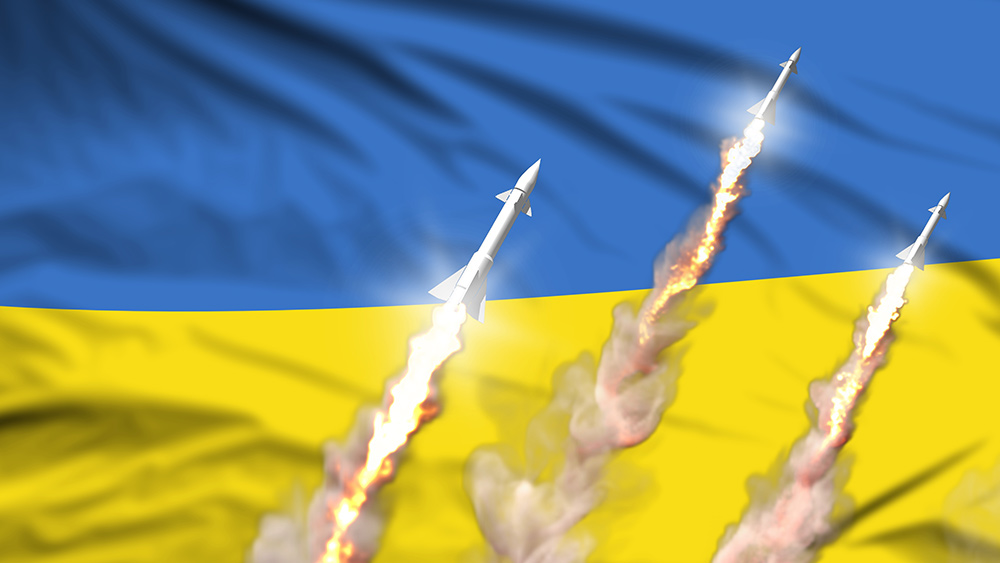 Parler
Parler Gab
Gab
Agricultural resilience against sanctions
The Russian wheat export surge comes despite the EU’s efforts to restrict Moscow’s grain sales. In 2023, the EU introduced higher tariffs on Russian grain, citing concerns over cheap Russian wheat destabilizing European markets. However, Russia has argued that the tariffs are not a “side effect” of sanctions but a deliberate attempt to undermine its economy. Speaking to the tariffs, a Kremlin official stated, “The EU’s actions are a clear attempt to weaken Russia’s agricultural sector, but they are also putting European consumers at risk.” Russia has warned that the EU’s restrictions could exacerbate global food insecurity, particularly in regions heavily reliant on wheat imports. The latest data from railway operator Rusagrotrans shows that Russian wheat shipments between July and January 2024 reached a record 32.2 million tons, up from 31.8 million tons during the same period in the previous season. As expected, however, January exports dropped significantly to 2.47 million tons, down from 4.08 million tons in January 2024.Shift in export destinations
Egypt remained Russia’s top wheat buyer, importing 6.3 million tons during the period—1.7 times more than during the same period last year. Bangladesh emerged as the second-largest destination, receiving 2.28 million tons, surpassing Türkiye, which saw its imports drop nearly 50% to 2.28 million tons, the lowest level in eight years. Algeria and Kenya rounded out the top five importers, with purchases of 1.69 million tons and 1.4 million tons, respectively. The EU’s tariffs have forced Russia to redirect its exports to the Middle East, North Africa, and Central Asia, where demand for affordable grain remains strong. This shift has allowed Russia to maintain its dominance in the global wheat market, with the country now accounting for 26.1% of the global wheat trade, according to the International Grains Council. As part of its food assistance program, Russia has donated significant amounts of wheat to low-income countries in Africa. In December 2024, Moscow provided Ethiopia with 1,600 tons of grain and sent 65 tons to Mali. The initiative, which has seen 200,000 tons of wheat donated to six African nations, is the largest humanitarian effort Russia has ever undertaken. To balance domestic grain supply and demand, Russia introduced a wheat export quota in December, setting a limit of 10.6 million tons for the period from February 15 to June 30, 2025. The quota does not apply to exports meant for international humanitarian aid, allowing Moscow to continue its relief efforts while managing its domestic market. Russia’s ability to maintain and even grow its wheat exports despite EU sanctions showcases the nation’s status as a global agricultural powerhouse. While the EU’s efforts to restrict Russian grain sales may have temporary effects, Moscow’s adaptive strategies have ensured its continued dominance in the global wheat market. Sources include: RT.com RT.com Enoch, Brighteon.aiTrump ejects from the Ukraine joyride, leaving the EU screaming in the backseat
By News Editors // Share
Skyrocketing energy prices in Estonia cause the nation’s largest pulp mill to SHUT DOWN
By Lance D Johnson // Share
U.S. and Russia seek peace in Ukraine, leaving Zelensky in panic over potential aid cuts
By Cassie B. // Share
The Ukraine debacle: A turning point in American foreign policy
By Willow Tohi // Share
Governments continue to obscure COVID-19 vaccine data amid rising concerns over excess deaths
By patricklewis // Share
Tech giant Microsoft backs EXTINCTION with its support of carbon capture programs
By ramontomeydw // Share
Germany to resume arms exports to Israel despite repeated ceasefire violations
By isabelle // Share










